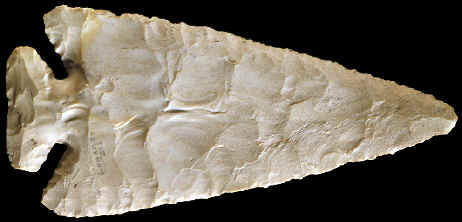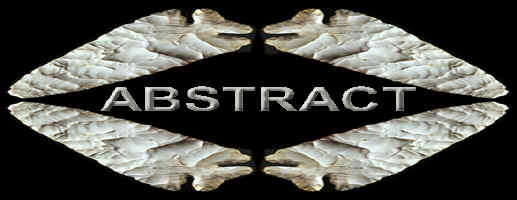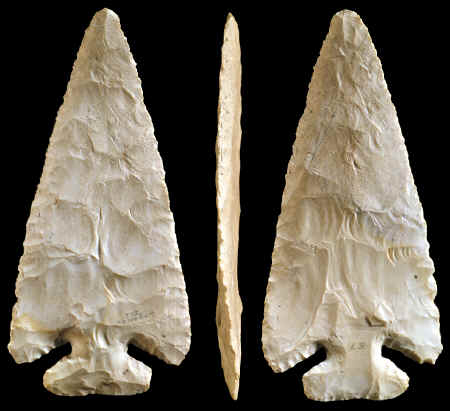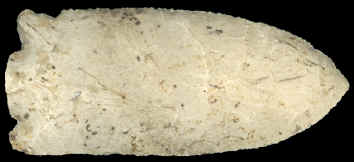|
||
|
||
|
"It's (Thebes Points) weakest point is in
the neck of the stem. Large blades without stems are often found in the
fields".---1985,
Gregory Perino, "Selected Preforms, Points and Knives of the North
American Indians," page 376.
Thebes points represent one of several different types of large Early Archaic notched knife forms. They date to somewhere between 8000 B.C. to 6000 B.C. Their large size, both in length and width, and their large corner notches makes them one of the most visually impressive knife forms from this period. |
||
|
Thebes points were named by Howard D. Winters in 1967 for examples that were found near Thebes in southern Illinois. There are several different varieties of Thebes points that are recognized within what is called the Thebes type cluster. Some of these sub-types are called the Cache variety, the E-Notched variety, the Ohio variety and Lost Lake point variety. |
||
|
||
|
Many people have traditionally thought of the Cache variety Thebes points to be the classic style. All five of the complete examples in this article are Cache variety Thebes points. These points are flat in cross section. Their most noticeable trait are the large rectangular corner notches that extend diagonally upward. The blade edges are usually either straight or convex and sometimes they are even recurved. The bases or stems are usually either straight or slightly concave and their edges are usually heavily ground. |
||
|
||
|
Greg Perino writes that "resharpening, usually by beveling, dictates this (Thebes point) was a knife form." Their large size and the fact that Thebes points were heavily resharpened indicates that large numbers of them were probably used as knives. Very few of them show any impact fractures that would indicate they were projectile points. Unresharpened Thebes points are the exception. Most examples have been resharpened one or more times. Resharpening was accomplished by pressure flaking along the edge by removing the flakes from one side. D.C. Waldorf writes that "Dalton points, while still in the haft, were reworked (resharpened) with the tip pointing towards the knapper while Archaic bevels (including Thebes points) were reworked (resharpened) with the tip pointing away from the knapper." |
||
| CONTINUE ON TO PAGE TWO | ||
|
"REFERENCES"
1971,
Perino, Gregory, "Guide to the Identification of Certain American
Indian Projectile Points," "Special Bulletin No. 4 of the
Oklahoma Anthropological Society," pp. 96-97. |
||





